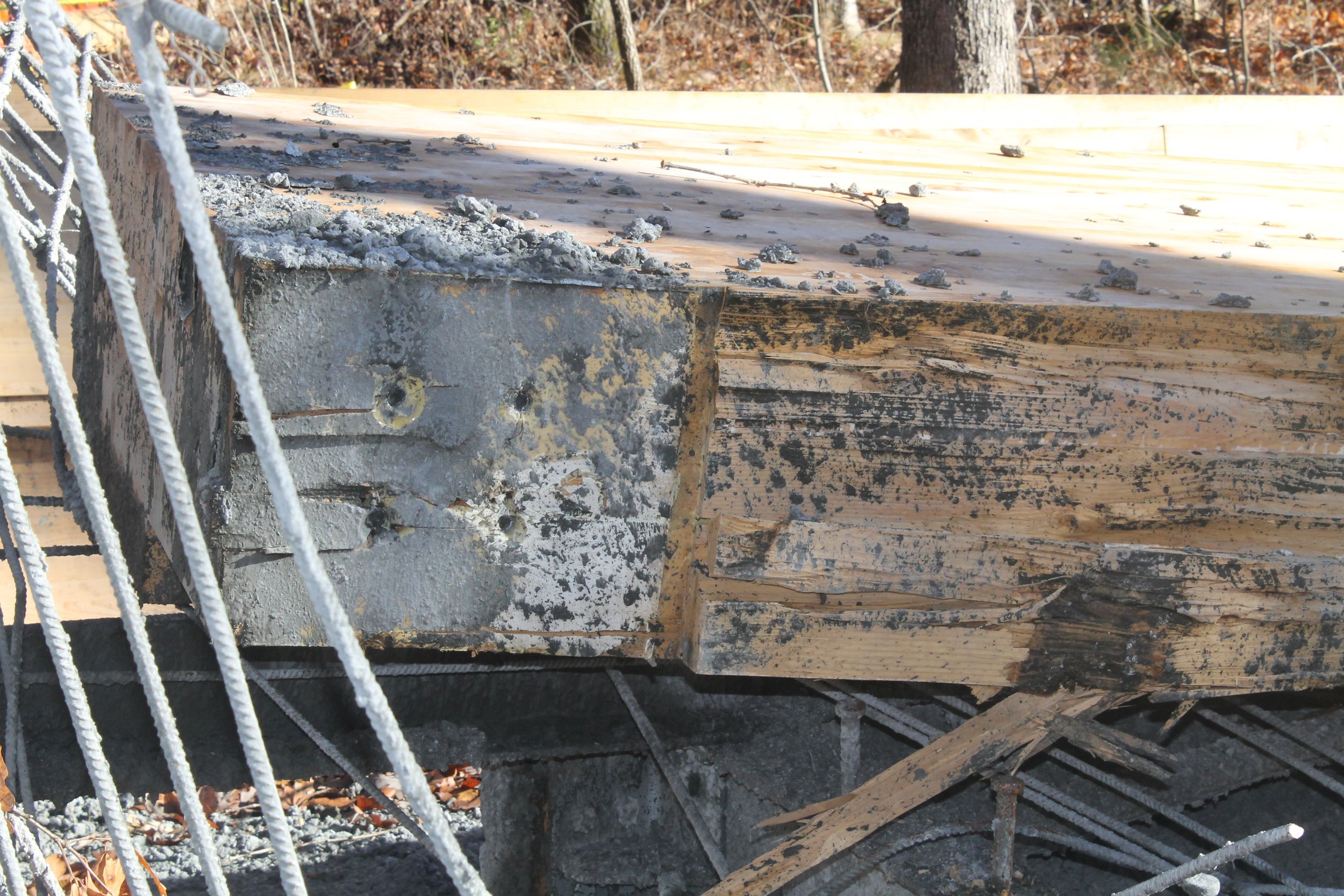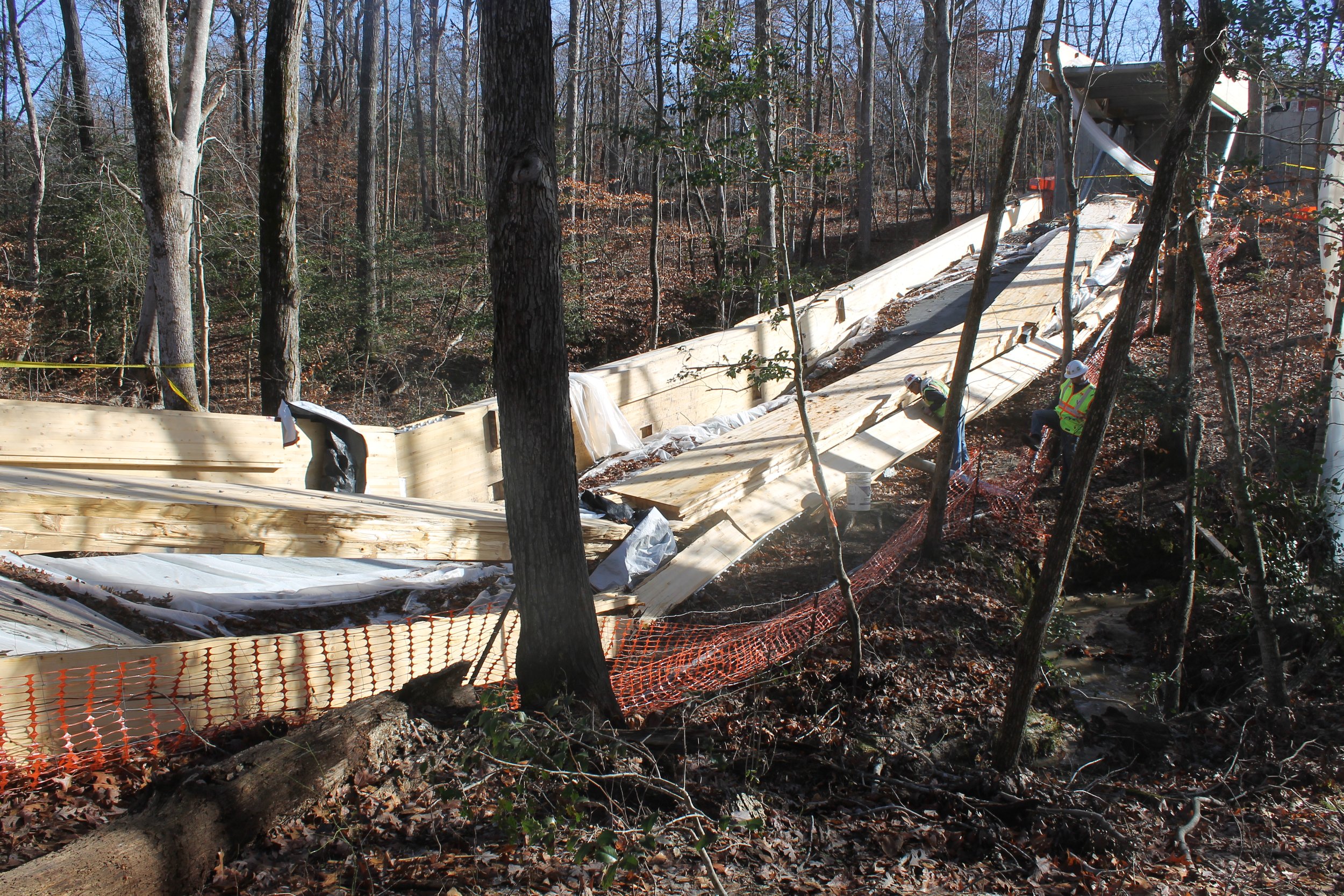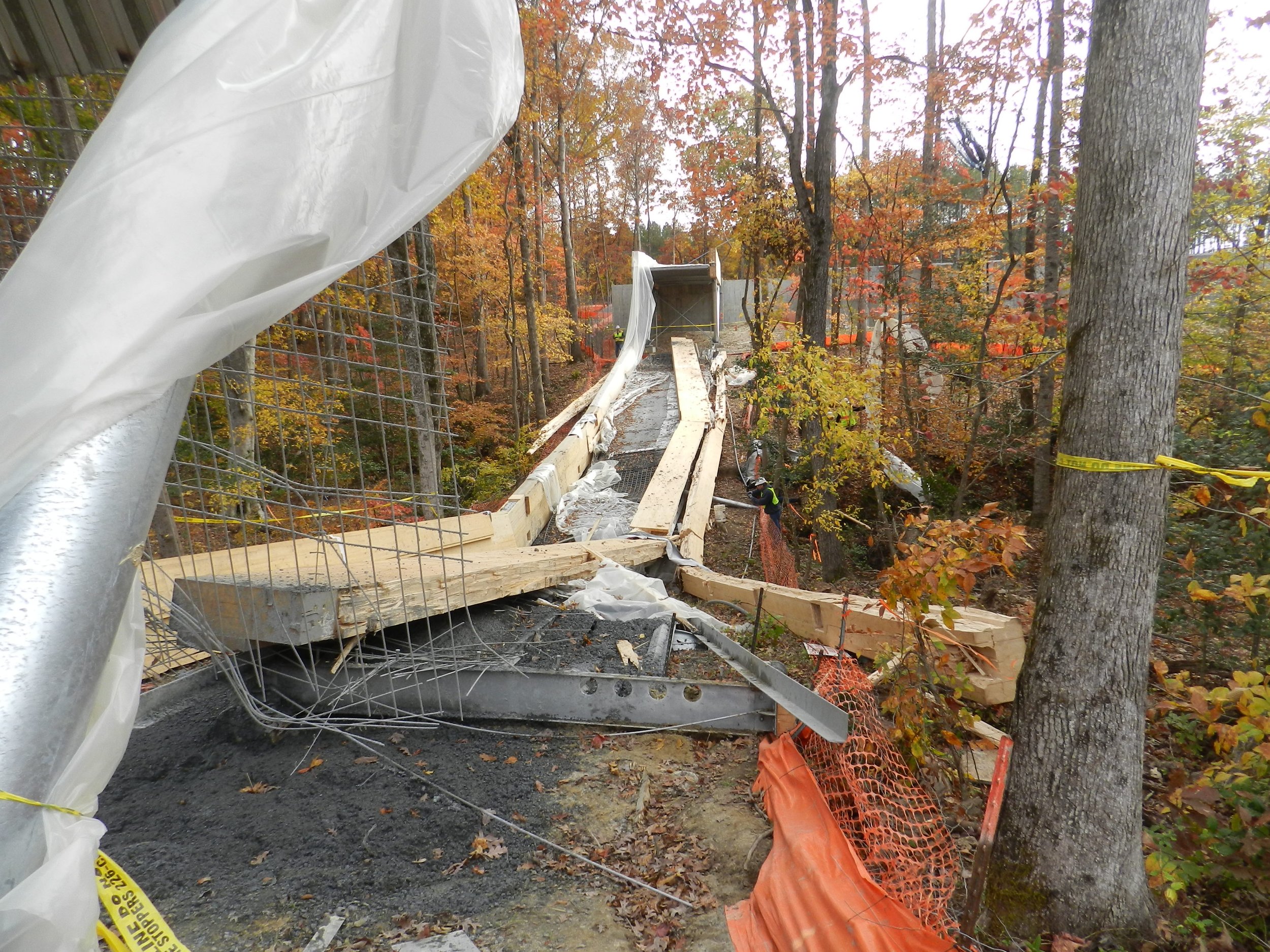


















DEVIL IN THE DETAILS: FAILURE BY DESIGN
During concrete placement along its deck, a 140-foot-long glued-laminated (glulam) pedestrian bridge collapsed leading to a loss of life and multiple injuries. Less than 15 hours later, a second, identical bridge located a few hundred feet away collapsed overnight without injuries or witnesses. Both bridges collapsed in a catastrophic manner under a fraction of the design load.
The elevated spans in both bridges were constructed using 5-foot deep glulam beams. Given the length of the elevated spans, the beams were supported with inverted king post trusses comprised of steel posts and locked-coil post-tensioning cables.
Pivot was retained to investigate the potential causes of the two collapses. To this end, Pivot examined the debris fields, reviewed construction documents, and performed finite element analyses. The models were subjected to a staged construction sequence analysis that mimicked the actual erection procedure. Furthermore, the models were used to evaluate the nonlinear behavior of the glulam material in areas of high-stress concentrations.
The analysis demonstrated that the failures in both bridges were the result of the improper design of the notched ends of the glulam beams. The analysis showed the formation of significant cross-grain tensile stresses along the notched sections of the glulam beams. Since the notches were not reinforced as required by applicable code provisions, the tensile stresses formed longitudinal cracks that propagated along the length of the glulam beam.
PROJECT SERVICES:
Collapse Investigation
Design Review
Structural Assessment
Finite Element Analysis
VIEW MORE WORK



